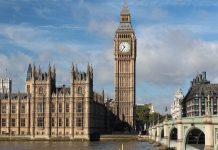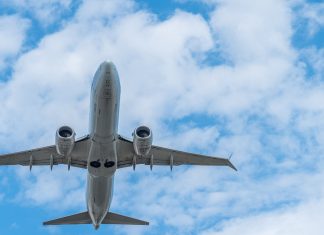After President Donald Trump released his proposed fiscal 2018 budget in May that called for the elimination of Brand USA, the United State’s national tourism marketing arm, president and CEO Christopher Thompson said that it was business as usual and that the organization wouldn’t get side-tracked.
To that effect, Brand USA launched its “One Big Welcome” campaign last month, in part, to help combat the mixed messages many international travelers have heard from the Trump Administration.
But a decline in partner cash and in-kind contributions – two key pillars of Brand USA’s funding model which come from tourism boards and other travel brands – for January through April indicate that some brands aren’t on board this year or are facing funding problems of their own.
Partner cash contributions, were down $6.7 million year-to-date through April compared the first four months of 2016. In-kind contributions, or donations of non-cash goods or services that help Brand USA with its marketing campaigns and programs, were also down year-to-date through April – $4.7 million less than the same period last year.
CFO Donald Richardson, speaking during the organization’s second quarter board meeting on June 28, said the partner contributions goal for fiscal 2017, which ends on September 30, was $55 million but has since been revised to $52 million.
In-kind contributions, however, have a more positive outlook as the organization had projected $50 million for fiscal 2017 but has revised that amount to $52 million.
Brand USA’s expenses, which include expenditures on marketing campaigns, were also $28 million behind budget year-to-date through April. Richardson said the lower expenditure amount is “primarily due to a shift in strategy and timing differences in marketing expenses.”
Richardson also said expenses have picked up in May and June and Brand USA is expecting to be about $2 million under budget for fiscal 2017.
Brand USA had $52.4 million in partner cash contributions and $41.6 million in in-kind contributions for fiscal 2016. At its first quarter March 22 board meeting, Richardson reported that partner cash contributions were $9.5 million ahead of budget year-to-date but didn’t report any in-kind contributions to date at the meeting.
In other words, partner cash contributions began to fall off in March and April and in-kind contributions were still falling behind through April.
Traveler Intent
During the June 28 board meeting, Anne Madison, Brand USA’s chief strategy and communications officer, said intent to visit the USA is down about five percent from the organization’s 60 percent target. “This is in-line with other international arrivals forecasts for this year,” said Madison.
Madison also told that partner contributions year-to-date through the beginning of July are tracking on par with last year. “Again, all of this is related to the timing of program opportunities,” she said. “Our partner retention rate remains strong and on pace with the prior year.”
The funding for Brand USA, which is a non-profit private partnership, comes from a mix of donations from more than 700 partner organizations, and matching funds. Taxpayer money isn’t used to fund Brand USA’s marketing efforts. Instead, contributions from partners such as tourism boards are matched by fees international travelers pay to the Electronic System for Travel Authorization (ESTA) program.
Brand USA designates partner cash contributions in six categories: diamond ($1 million or more), platinum ($500,000 to $999,999), gold ($250,000 to $499,999), silver ($100,000 to $249,999), bronze ($10,000 to $99,999) and supporting (up to $10,000). The bronze category had the highest number of partners in fiscal 2016 (more than 100), the organization’s fiscal 2016 annual report shows.
Brands such as Expedia, Hilton Worldwide, TripAdvisor, Visit California, and Visit Florida contributed $1 million or more in fiscal 2016, for example.
Drysdale said TravelNevada plans to revamp its presence on Brand USA’s consumer-facing website VisitTheUSA.com; continue multi-channel programs in Australia, China and India; participate in a sales mission to India; debut a film that features Nevada in German movie theaters and more.
“We’ve found the work we’ve done with Brand USA to be very fruitful, said Drysdale. “We know that by partnering with Brand USA we’re going to be partnered with other states in our part of the country. But I think that helps us because we’re not really an entry point and for the most part Nevada is not that first stop destination.”
Goals Are Going Forward
At last month’s IPW conference in Washington, D.C., Secretary of Commerce Wilbur Ross delivered an optimistic address about foreign visitation and the Trump Administration’s positioning of the travel industry despite Trump’s continued tough stance on immigration and foreigners.
Although that speech was delivered with a backdrop of President Trump simultaneously tweeting his support for his travel ban and the release of his proposed fiscal 2018 budget which outlined Brand USA’s funding cut.
Thompson, who like many others at the conference felt Ross’ remarks were some much-needed reassurance, said during the June 28 meeting that the commerce department supports Brand USA’s goals.
Among the most important goals is attracting 100 million international visitors and $250 million in visitor spending by 2021, a goal set by the Obama Administration in 2012.
“Part of our ongoing dialogue with our friends at the department of commerce and our new commerce secretary is one of the messages he gave to the travel and tourism advisory board during one of our earliest interactions was ‘stick to your goals,’” said Thompson.
“But we’re not necessarily trying to maximize the total number of visitors, we’re trying to maximize the spend,” he said. “Markets like China, India and Brazil will help with growing the spending.”
It will ultimately be up to Congress – not President Trump – to decide the merits of Brand USA and save its funding when it’s slated to vote on the federal government’s fiscal 2018 budget later this year.
























